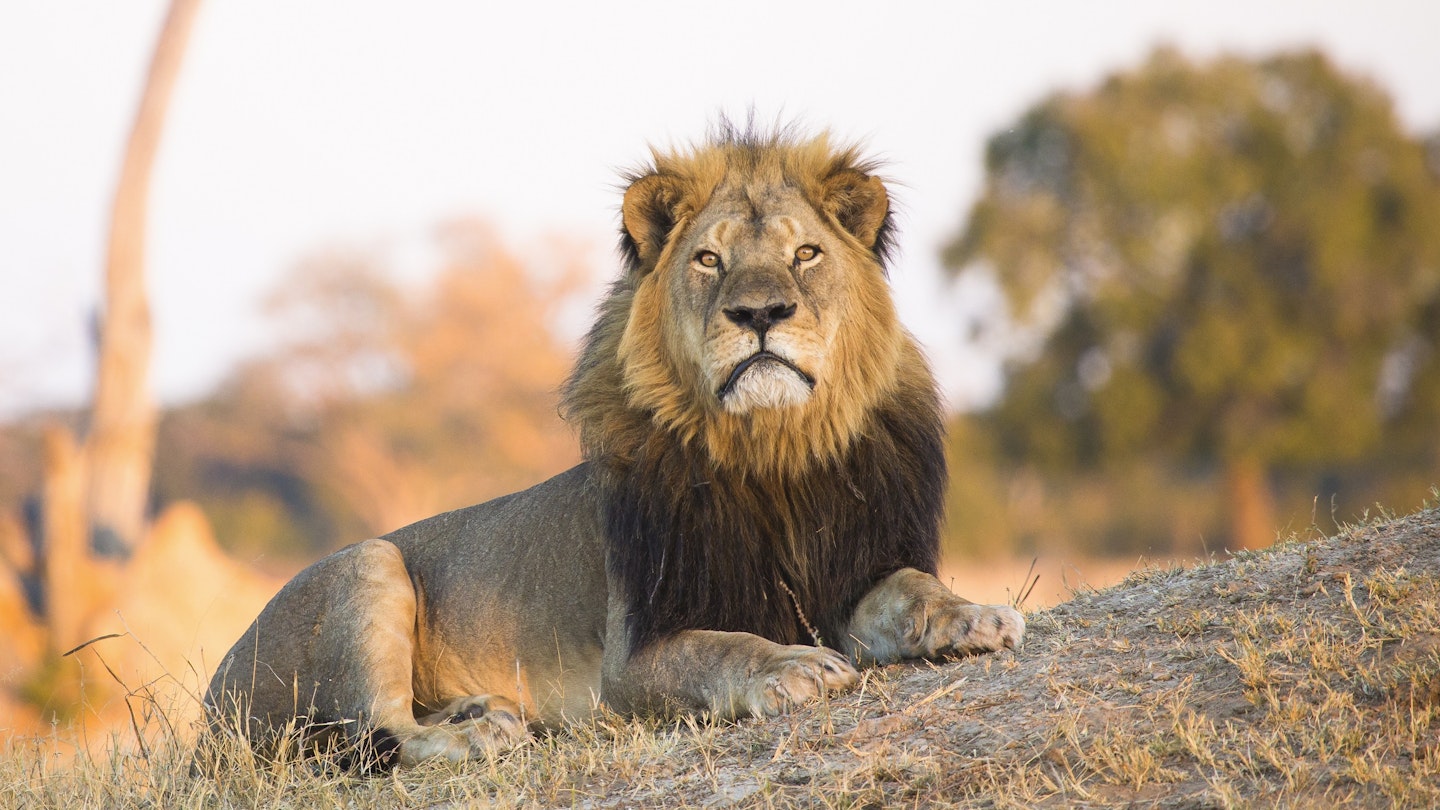Remember Cecil the lion? Hunted in Zimbabwe with a bow and arrow by Minnesota dentist Walter Palmer in July 2015, Cecil could just be the most famous lion ever to walk the plains of Africa. Celebrities from Leonardo DiCaprio to Jimmy Kimmel, Ellen DeGeneres, and Ricky Gervais took Cecil’s name to millions on social media, while petitions demanding action against hunting received more than a million signatures.
The Lions of Hwange
Although Cecil’s demise cast a long shadow over Hwange National Park, located in western Zimbabwe, the park remains one of Africa’s best places to see lions. An estimated 500 to 700 lions roam the Hwange ecosystem. Notably, Hwange is part of the Kavango Zambezi Transfrontier Conservation Area (KAZA), a vast network of 36 protected areas spanning Zimbabwe, Zambia, Botswana, Namibia, and all the way to Angola, which connects Southern Africa’s most significant lion populations.
The safari guides of Hwange National Park continue to remember Cecil with great fondness, sharing stories of his unique personality. For instance, one tale recounts how he once surprised a camp attendant walking between tents in the early morning—a surprise encounter that left the attendant fainting, with a bewildered Cecil unsure of what to do next. Cecil also redefined lion dynamics when he united with his once-sworn enemy Jericho to reign over a prime lion territory in the park.
Despite the unfortunate event of his hunting, Cecil’s legacy lives on. Many of his family members have survived and continue to inhabit the popular tourist areas of the park.
Cecil’s Progeny
Hwange’s primary safari zones are situated near the eastern border of the park. Main Camp, which includes park headquarters and campsites frequented by honey badgers, is positioned at the northern end of a series of pans, waterholes, and open areas shadowed by light woodlands. From locations like Makwe in the north, through the Kennedy vleis to Ngweshla, lions are commonly spotted.
At Ngweshla, you are likely to encounter a powerful sisterhood of four lionesses, who are Cecil’s daughters, alongside their respective cubs. If luck is on your side, you might also catch a glimpse of the pride males, Humba and Netsayi, who carry on Cecil’s legacy. Both Humba and Netsayi are stunningly maned, comfortably interacting with vehicles and visitors.
These lions, in the publicly accessible areas of the park, are quickly becoming celebrities in their own right, slightly overshadowing Cecil, yet still embodying his tradition.
Elephant Hunting
In the northwest corner of Hwange, where tourist traffic is lower, there are just as many lions. A growing number of luxury camps, including the recently renovated Robins Camp, improve infrastructure in this area. Easy access is available from the Padamatenga border post between Zimbabwe and Botswana. One of the best viewing spots in Hwange National Park is the elevated hide at Big Tom’s, especially during sunset.
Interestingly, the park lays claim to an impressive 53,000 elephants, with an estimated ratio of 100 elephants for every lion. From Big Tom’s to Ngweshla, elephant sightings are not only guaranteed but prolific. The park’s management ensures that water availability at waterholes across the northern part attracts elephants throughout the year.
Whenever lions and elephants coexist, incredible interactions are possible. Hwange is one of the few areas in Africa where one can observe lions preying on elephants—this striking dynamic illustrates the largest weight disparity between predator and prey documented. While adult male lions rarely exceed 250kg, elephants can weigh up to 7000kg.
Throughout the year, elephants generally find themselves secure, given the ample water and food resources in Hwange. However, during the dry season, particularly in October or even as early as September, the elephant herds may begin to weaken. The drying waterholes in the southern park force these animals to travel considerable distances in search of hydration, leading to exhaustion among the families.
As these circumstances unfold, it is not unusual to observe lions scavenging on elephant carcasses in October. While actual hunts remain rare, younger elephants often become targets, as lions avoid attacks when the entire herd stands guard. More frequently, however, exhausted elephants succumb to fatigue, providing unintentional sustenance for the lion pride.
Hwange’s Other Safari Stars and Cecil’s Legacy
While lions and elephants may dominate the narrative, Hwange’s allure extends beyond them. Leopards and cheetahs inhabit the park, albeit covertly. Large buffalo herds frequently roam during the dry seasons, and African wild dogs occasionally appear, though they are elusive. Uncommon antelope species such as sable, roan, and gemsbok also inhabit the eastern tourist hub of the park.
Guests arriving in Hwange are often eager to learn more about Cecil—questions about his habitat, character, and surviving descendants linger. Even in absence, Cecil’s bloodline and legacy endure, symbolizing the strength and determination of lions navigating the intricacies of survival in the wild. While Cecil gained notoriety, Hwange still offers a tranquil environment compared to popular parks throughout East Africa and Southern Africa. The peaceful sounds of lions roaring in the night create an enchanting atmosphere.





